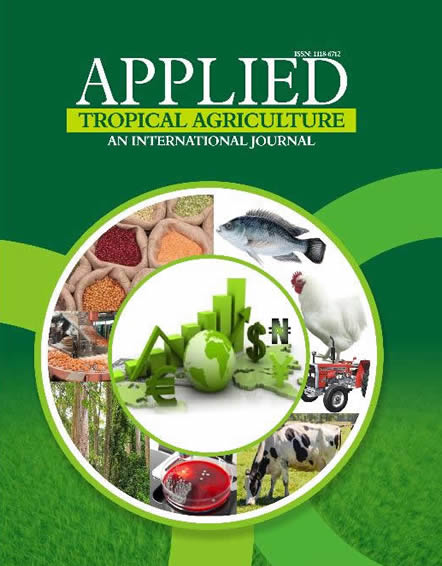Consumption of fresh vegetables promotes good health and is encouraged but possess a wide range of microbial
contaminants and have been implicated in several foodborne disease outbreaks. Washing can reduce microbial load of
pathogens thereby minimizing harm to consumers. The focus of this study was to assess the effectiveness of rinse agents (plain
water, salt, vinegar and chlorine solutions), on the microbial content of ready- to- eat vegetable (cucumber, spinach and
lettuce) samples using standard methods. Microbial load of unwashed vegetables ranged from (3.8 × 105 - 1.2 × 107 CFU/g);
(1.2 × 106- 2.1 × 107 CFU/g); and (1.3 × 107 - 2.6 × 107 CFU/g), while microbial load for washed vegetables ranged from
(5.0±0.7×104 - 5.8±.7×106 CFU/g); (2.8±0.7×105 - 1.9±0.0×107 CFU/g); (3.8±0.7×105 - 9.8±0.7×106 CFU/g) for total
viable, enterobacteriaceae and staphylococcal count respectively. There was 1-2 log reduction in the microbial load of
vegetables after rinsing. Chlorine and vinegar solutions were more effective than plain water. Nine genera of bacteria were
identified before rinsing including Staphylococcus, Pseudomonas, Bacillus and E. coli. However, after rinsing, 2 to 7 species
were identified. This study showed that ready to eat vegetables are contaminated with different bacteria genera of public
health concern. Plain water was not effective enough for the reduction of microbial load therefore chlorine or vinegar rinse
could be adopted.
Key words: Ready-to-eat vegetables, salad, rinse agents, chlorine, vinegar
PAPER TITLE :MICROBIAL QUALITY OF SELECTED READY-TO-EAT VEGETABLES FROM IWO, NIGERIA AND EFFECTIVENESS OF RINSING AGENTS
APPLIED TROPICAL AGRICULTURE | VOLUME 22 NUMBER 2 2017
Paper Details
- Author(s) : Ajayi, O.A.*, Amokeodo, M.I. and Akinwunmi, O.O.
- Abstract:


